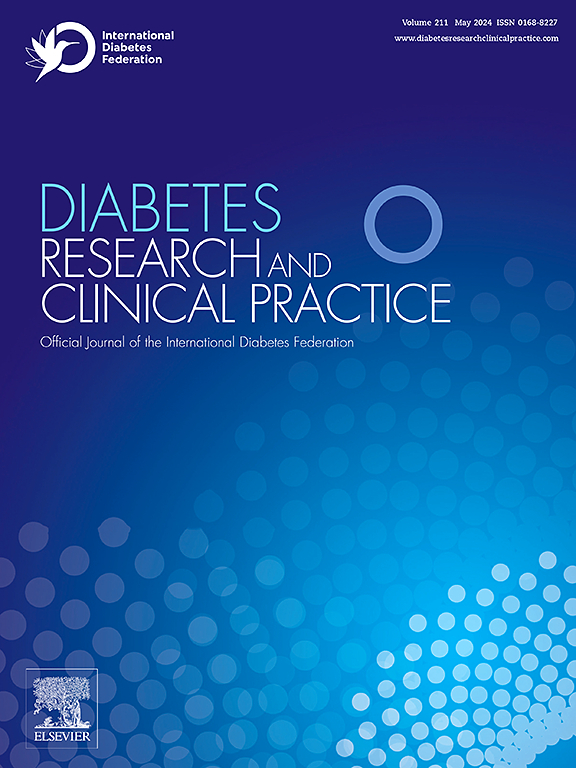2型糖尿病患者人体测量指标与心血管危险的关系
IF 6.1
3区 医学
Q1 ENDOCRINOLOGY & METABOLISM
引用次数: 0
摘要
目的本研究旨在评估新的人体测量指标——内脏脂肪指数(VAI)、锥度指数(CI)和脂质积累积(LAP)——是否可以预测2型糖尿病(T2DM)患者心血管疾病(CVD)的风险。方法对Bandırma教研院371例19 ~ 64岁住院T2DM患者进行方法学研究。人体测量,包括腰围和身体质量指数(BMI),被用来计算VAI、CI和LAP。使用系统冠状动脉风险评估(SCORE)模型估计10年心血管疾病风险,并使用受试者工作特征(ROC)曲线评估指标的预测性能。结果≥65岁人群的平均SCORE风险显著增高(p <;0.001),其中70.4%属于高危人群。ROC分析显示,VAI、CI和LAP的判别能力有限,曲线下面积(Area Under the Curve, AUC)分别为0.454、0.563和0.468。在两个年龄组中,这些指标与SCORE模型均无显著相关。结论vai、CI和LAP不能充分预测T2DM患者的CVD风险,提示传统的风险评估方法对于T2DM患者可能仍然更可靠。本文章由计算机程序翻译,如有差异,请以英文原文为准。
The relationship between anthropometric indices and cardiovascular risk in patients with type 2 diabetes mellitus
Objective
This study aimed to assess whether novel anthropometric indices—Visceral Adiposity Index (VAI), Conicity Index (CI), and Lipid Accumulation Product (LAP)—could predict Cardiovascular Disease (CVD) risk in individuals with Type 2 Diabetes Mellitus (T2DM).
Methods
A methodological study was conducted with 371 hospitalized T2DM patients aged 19–64 at Bandırma Education and Research Hospital. Anthropometric measurements, including waist circumference and Body Mass Index (BMI), were used to calculate VAI, CI, and LAP. The 10-year CVD risk was estimated using the Systematic Coronary Risk Estimation (SCORE) model, and Receiver Operating Characteristic (ROC) curves assessed the predictive performance of the indices.
Results
The mean SCORE risk was significantly higher in individuals aged ≥ 65 years (p < 0.001), with 70.4 % classified as high-risk. ROC analysis showed that VAI, CI, and LAP had limited discriminatory ability, with Area Under the Curve (AUC) values of 0.454, 0.563, and 0.468, respectively. No significant correlation was found between these indices and the SCORE model in both age groups.
Conclusion
VAI, CI, and LAP do not adequately predict CVD risk in T2DM patients, suggesting that traditional risk assessment methods may remain more reliable for this population.
求助全文
通过发布文献求助,成功后即可免费获取论文全文。
去求助
来源期刊

Diabetes research and clinical practice
医学-内分泌学与代谢
CiteScore
10.30
自引率
3.90%
发文量
862
审稿时长
32 days
期刊介绍:
Diabetes Research and Clinical Practice is an international journal for health-care providers and clinically oriented researchers that publishes high-quality original research articles and expert reviews in diabetes and related areas. The role of the journal is to provide a venue for dissemination of knowledge and discussion of topics related to diabetes clinical research and patient care. Topics of focus include translational science, genetics, immunology, nutrition, psychosocial research, epidemiology, prevention, socio-economic research, complications, new treatments, technologies and therapy.
 求助内容:
求助内容: 应助结果提醒方式:
应助结果提醒方式:


